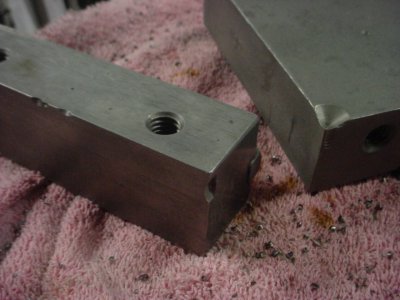- Joined
- Oct 17, 2018
- Messages
- 923
I have a Kurt vise that has a few divots in it from 40 or more years of use. I do not want to pay a welder to fill them since they are not structural, just cosmetic. I thought I would use JB Weld epoxy. Anyone see any issues with this? The color won't match exactly, but it will be close.

Three flaws are shown. The one on the left is on the jaw and I won't repair this one since it's going to undergo clamping forces. The middle one on the same piece will be repaired, as will the one on the right on the movable jaw. There is also a hole that is out of the frame on the right piece that I will fill.
BTW, vise jaws are $77 each and the movable jaw is $490. I've had cast iron welded and its about $40 per weld. Then I would have to grind down the welds with a surface grinder.

Three flaws are shown. The one on the left is on the jaw and I won't repair this one since it's going to undergo clamping forces. The middle one on the same piece will be repaired, as will the one on the right on the movable jaw. There is also a hole that is out of the frame on the right piece that I will fill.
BTW, vise jaws are $77 each and the movable jaw is $490. I've had cast iron welded and its about $40 per weld. Then I would have to grind down the welds with a surface grinder.

